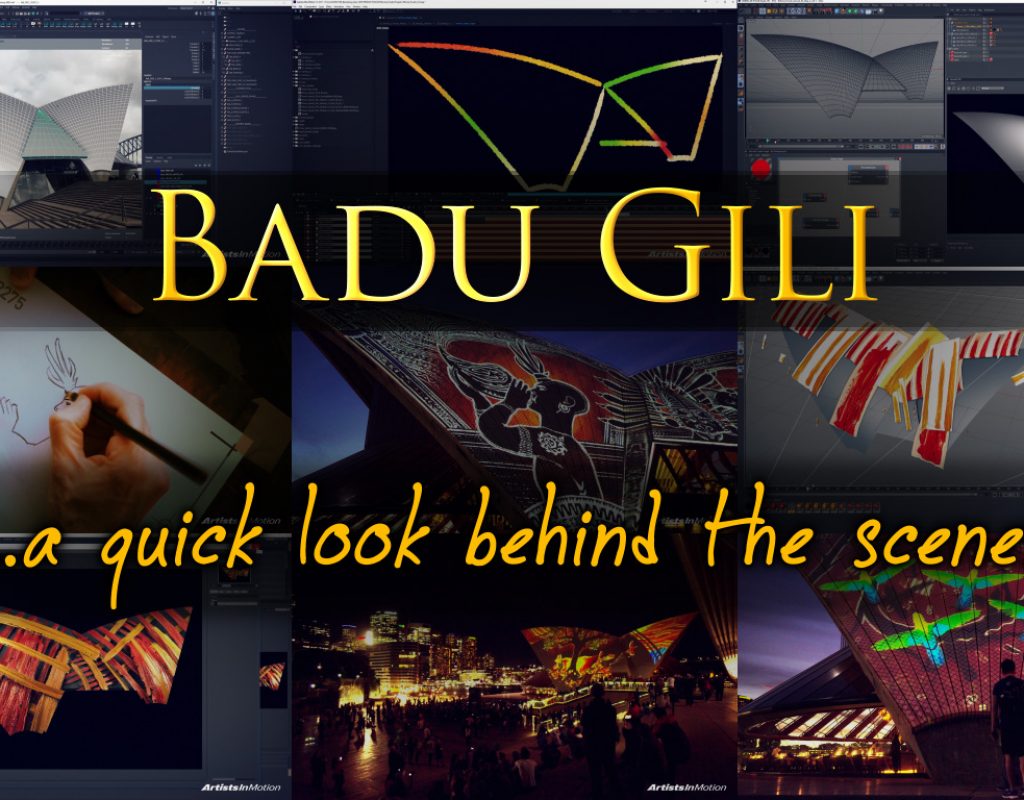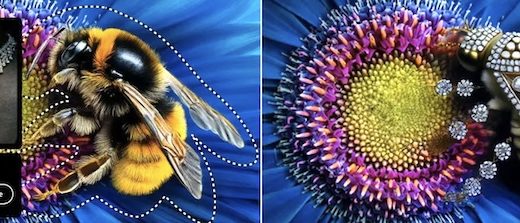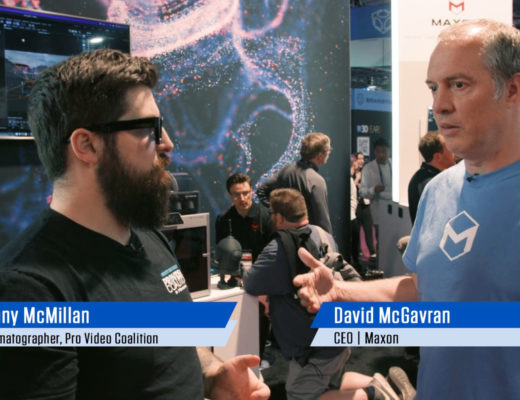Sydney’s “Artists in Motion” recently posted a rare glimpse into the work involved to produce “Badu Gili”, a building projection made for the Sydney Opera House. The talented crew at AIM used After Effects, Maya, Cinema 4D and good old fashioned Photoshop to create a seven-minute animated showcase of indigenous Australian art that is now a permanent installation, running nightly at sunset and 9pm.
Sydney is also home to “Vivid”, the world’s largest lighting and projection festival, which runs for three weeks every year. Approaching its 10th year, the centerpiece of the Vivid Festival is the video projection onto the iconic Sydney Opera House – and an earlier article of mine offers a detailed project breakdown of the work I did for the 2013 Vivid festival.
In 2016, Vivid made headlines when they announced that the Opera House would be used to showcase the artwork of indigenous Australians. With six artworks curated by Rhoda Roberts, the organisers of the Vivid Festival turned to Artists in Motion to transform the original paintings into 16 minutes of animation. Titled “Songlines”, the finished piece was a moving tribute to Australia’s indigenous artists, and the stunning images didn’t just wow the local audience but also made international headlines – including articles on the BBC and CNN.

While the “Songlines” piece was a cultural milestone for the indigenous community, it only ran for the three weeks of the Vivid festival. The next step was to create a permanent installation that would again showcase Australia’s indigenous artists, but one that would run nightly for the indefinite future.
Sydney Opera House curator Rhoda Roberts selected another five artists, and turned to the same team at Artists in Motion to transform the paintings into seven minutes of animation. In both cases the overall arc – the artists themselves, the paintings, the order in which each painting was presented, plus the music – was directed by Rhoda and the Sydney Opera House. Throughout the production process, AIM had weekly conversations with Rhoda about how the project was progressing, who then had fortnightly presentations with the Opera House trust where she presented renders of the work in progress. The team at AIM were required to act on any feedback and notes, which included a complete re-working of the ending.
The Sydney Opera House supplied AIM with photographs of the selected pieces, and then it was up to each individual artist to transform the original static image into a moving video, using whichever software package they specialized in. While 3D animation was done in both Maya and Cinema 4D, final compositing, compiling and overall colour grading was done in After Effects. The working resolution was basically 4K.
From the AIM website:
Our team was supplied a series of photographs of selected paintings done by each artist. Similar to our approach with Songlines, we first analysed each of the artist’s pieces and chosen techniques, mediums, and styles, then translated the work using digital tools to achieve the same look. Several different types of software and techniques were applied to recreate each artist’s style – everything from particle systems to painting dot by dot in Photoshop to physically painting with acrylics, were used in order to maintain the integrity of the original pieces of artwork.
With each artist a different set of tools and techniques were required to bring their piece to life. Each shot was carefully and thoughtfully directed, playing to the strengths of the artists’ work and the stories they told through them. The chapters were woven together and set to a musical soundscape composed by Damian Robinson, featuring vocals from Djakapurra Munyarryun, Cecil Mcleod, Taryn Beatty, Honey Beatty and Travis De Vries.
The year-round experience is a first for the Opera House in its move towards reconciliation, fostering and celebrating a shared sense of belonging for all Australians.
The “behind the scenes” video they recently posted gives an insight into the process, and there’s plenty of fine detail to examine if you hit the pause button at the right time. Several of the artists at AIM recorded screencasts of their work, and then edited several months of work down to a few minutes!
Beyond all of the technical details, however, one particular aspect resonated with me the most – and that was the work involved in creating a single brush stroke.
I’ve been using After Effects for many years, and over that time I can’t begin to count how many times I have needed an image of a brush stroke / paint texture. If you type “brush stroke texture” into Google Images you get millions of results, and even a basic search on Shutterstock yields over 700,000 images. And yet for the scene based on work by artist Minnie Pwerle, none of the existing brush strokes seemed quite right. So Matt Lock (head of 2D at AIM, and previously featured on Motionographer) bought some paint, experimented with some brushes, and photographed the results. With some re-working in Photoshop, he created a unique brush stroke texture which was more in keeping with the style of Pwerle’s original artwork. No special plugins, no rendering tricks in 3D, just some paint, a brush and some paper. And definitely no settling for something that showed up on Google but wasn’t exactly right…

Some of the artworks featured in the final piece are over 100 years old, and yet the very latest visual effects technology has been used to introduce them to a new audience, and thanks to sites such as YouTube, even a global audience.
Some initial tests for the frogs in the opening sequence. Modelled and animated in Maya by Tess Boughton.
The full “Badu Gili” show, complete with commentary by the show’s curator, can be viewed on YouTube. More details can be found on the Sydney Opera House website, and full credits for the Badu Gili project can be found on the Artists in Motion website.
https://www.youtube.com/watch?v=4H6GvmIHPaA
**Disclaimer: While I have worked as an independent freelancer for Artists in Motion, I am not an employee of the company. I was not involved in the production of either “Songlines” or “Badu Gili”.

Filmtools
Filmmakers go-to destination for pre-production, production & post production equipment!
Shop Now













